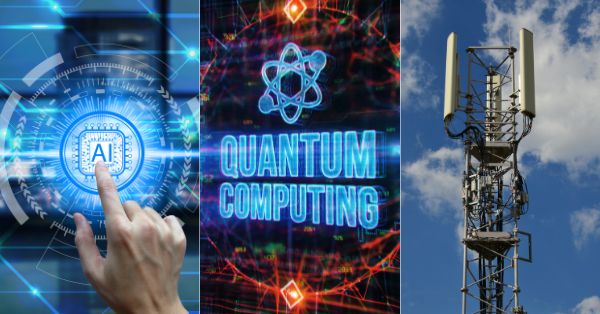T-Mobile’s recent strides emphasize the growing synergy between AI and wireless connectivity, with NVIDIA emerging as a crucial partner in their vision for future networks, particularly 6G. Through strategic partnerships and a new AI RAN Innovation Center, T-Mobile aims to integrate AI to enhance network performance, streamline operations, and create new revenue models for telecom infrastructure.
AI and 6G: The AI-RAN Alliance’s Vision for Future Networks
In early 2024, the AI-RAN Alliance was launched at the Mobile World Congress (MWC) in Barcelona to spearhead the fusion of artificial intelligence and radio access network (RAN) technology. With founding members including NVIDIA, AWS, Arm, Ericsson, Microsoft, Nokia, and Samsung, this alliance is positioning AI as a pivotal technology for the next generation of cellular networks. Unique among network operators, T-Mobile and Japan’s SoftBank are the only carriers within the alliance, reflecting T-Mobile’s commitment to leading the 6G transition with AI at its core.
T-Mobile CEO Mike Sievert described their approach on a recent earnings call, stating, “We intend to drive the future of 6G… [our partnership with] Ericsson, Nokia, and NVIDIA will create an AI RAN ecosystem that will disproportionately benefit T-Mobile customers.” The alliance, led by Alex Jinsung Choi—a former Deutsche Telekom executive—has since set up working groups to explore AI’s integration with RAN technology, reflecting a long-term commitment to transforming cellular networks with AI-driven insights and efficiencies.
The AI-RAN Innovation Center: A Hub for AI-Enhanced Telecom Solutions
At T-Mobile’s Capital Markets Day, Sievert and NVIDIA CEO Jensen Huang unveiled plans for an AI RAN Innovation Center, to be based at T-Mobile’s headquarters in Bellevue, Washington. This initiative, supported by Nokia and Ericsson, aims to leverage AI to revolutionize T-Mobile’s RAN by using NVIDIA’s cutting-edge technology, including the new ARC-1 supercomputer.
This center will not only focus on network optimization but also explore opportunities to deploy third-party workloads on AI-enabled infrastructure, similar to the GPU-as-a-Service models being developed by global operators like SK Telecom. Huang explained that the supercomputer would allow T-Mobile to use AI for network optimization, while also hosting external applications, thereby generating potential new revenue streams. This aligns with T-Mobile’s goal to establish itself as a major player in the AI-driven 6G landscape.
NVIDIA’s AI Aerial Platform and the Path to AI-Driven Networks
NVIDIA’s AI Aerial platform plays a central role in T-Mobile’s vision for AI-driven networks. Unveiled in September 2024, the platform provides a suite of AI tools and frameworks specifically designed for telecom operators. With RAN-specific libraries on NVIDIA’s CUDA platform, as well as popular AI frameworks like PyTorch and TensorFlow, the AI Aerial platform facilitates the training, simulation, and deployment of AI applications within telecom networks.
One feature, NVIDIA Sionna, functions as a link-level simulator, enabling the development and training of neural network-based algorithms for 5G and 6G signal processing. Additionally, the NVIDIA Aerial Omniverse Digital Twin allows operators to simulate real-world network environments, which will be essential in predicting how AI-driven RAN technology performs in diverse scenarios.
As Tommi Uitto, Nokia’s President of Mobile Networks, noted, “By uniting the telecom and AI industries, we can unlock the full potential of AI, improving network performance, reducing costs, and opening up new opportunities.”
Leveraging AI for 6G: Optimizing RAN Performance and Efficiency
With AI’s integration, T-Mobile is reimagining RAN architectures to create more efficient networks that can handle complex tasks in real time. John Saw, T-Mobile’s CTO, elaborated on the value AI adds to RAN during his appearance at NVIDIA’s AI Summit in Washington, DC, where he highlighted how T-Mobile’s RAN could use NVIDIA GPUs for enhanced computational tasks. For example, NVIDIA GPUs can support complex calculations, such as the reproducing kernel Hilbert space (RKHS) channel estimator, which improves wireless connection management across cell sites.
Through AI, T-Mobile can optimize its networks to handle seasonal changes that impact signal strength, such as the effects of foliage on radio propagation. “When the trees’ leaves come out in spring, it changes the radio propagation. An AI-enabled network will understand that and adjust automatically,” Sievert explained in a recent interview with Fortune. By integrating AI, T-Mobile aims to create a “smarter and smarter network” capable of delivering higher capacity and reliability for users.
Economic Opportunities Through AI and GPU Integration
AI-powered RAN brings potential cost-saving opportunities by reducing reliance on traditional, hardware-centric solutions. According to Sievert, T-Mobile’s collaboration with NVIDIA could also pave the way for innovative revenue models by enabling AI services at the edge of its network. With NVIDIA’s GPUs embedded in cell sites, T-Mobile could offer high-speed AI processing for enterprise customers, supporting applications from autonomous vehicles to real-time data analytics.
Chris Pearson, president of the 5G Americas trade association, outlined AI’s potential to transform the wireless industry, noting its applications in network planning, predictive maintenance, spectrum management, and security. As AI-driven networks mature, telecom providers could see new income streams from enterprises needing localized AI processing power with low latency—a market NVIDIA’s AI Aerial platform is designed to serve.
Beyond T-Mobile: The Growing Global Adoption of AI in RAN
T-Mobile isn’t alone in its pursuit of AI-enhanced network operations. Other global telecom leaders are also investing in GPU-based AI solutions to advance their RAN. For example, Fujitsu demonstrated how NVIDIA’s GPUs could optimize wireless signal processing, boosting upload speeds from 252 Mbps to 366 Mbps. Additionally, SK Telecom and Japan’s Docomo have been testing AI-enabled 6G air interfaces that improve both network performance and energy efficiency.
The U.S. government is also exploring AI’s role in telecom, particularly in spectrum management. AI’s ability to analyze massive data sets in real-time makes it ideal for spectrum-sharing applications, which could enhance bandwidth efficiency and user experience in heavily trafficked areas.
AI-Driven Network Transformation: Toward a Sustainable and Profitable Future
NVIDIA’s AI Aerial platform positions AI as a critical tool not only for network management but also as a profitable service offering. By deploying AI-enabled base stations that can handle third-party workloads, T-Mobile and other operators could generate revenue beyond traditional telecom services, a concept explored by companies like Singtel and SK Telecom.
T-Mobile’s strategic partnerships with industry giants, including Ericsson, Nokia, and NVIDIA, underscore its ambitions to lead in AI-enabled 6G technologies.
As Sievert stated, “If we can be co-authors of this transformation…working with the world’s leaders…we can create the future.” This approach has the potential to benefit T-Mobile customers disproportionately, as the carrier aims to deliver an AI-enhanced network capable of adapting to a fast-evolving digital landscape.
The next-generation AI RAN infrastructure, which will support hardware/software disaggregation, virtualized RAN, and a high level of flexibility, reflects T-Mobile’s intent to build networks that are adaptable and cost-effective. By reducing deployment costs and enhancing network efficiency, AI-powered RAN infrastructure could offset the expenses of future 6G upgrades and open doors to new business opportunities.
Looking Ahead: AI-RAN Alliance’s Roadmap and 6G Standardization
As part of the AI-RAN Alliance, T-Mobile and NVIDIA are actively contributing to the standardization of 6G networks, with hopes that the AI-RAN initiative will soon work alongside 3GPP. Saw indicated that the alliance is keen to “discover a path to commercialization,” moving AI RAN beyond experimental stages and toward practical, market-ready solutions by the expected 6G rollout around 2030—or possibly sooner.
With advanced AI tools now integrated into the telecom ecosystem, T-Mobile and its partners in the AI-RAN Alliance are building a foundation that could revolutionize wireless connectivity. By harnessing AI’s capabilities for network efficiency, user experience, and new business models, the alliance members are setting the stage for a highly adaptive, intelligent network infrastructure that will define 6G.























